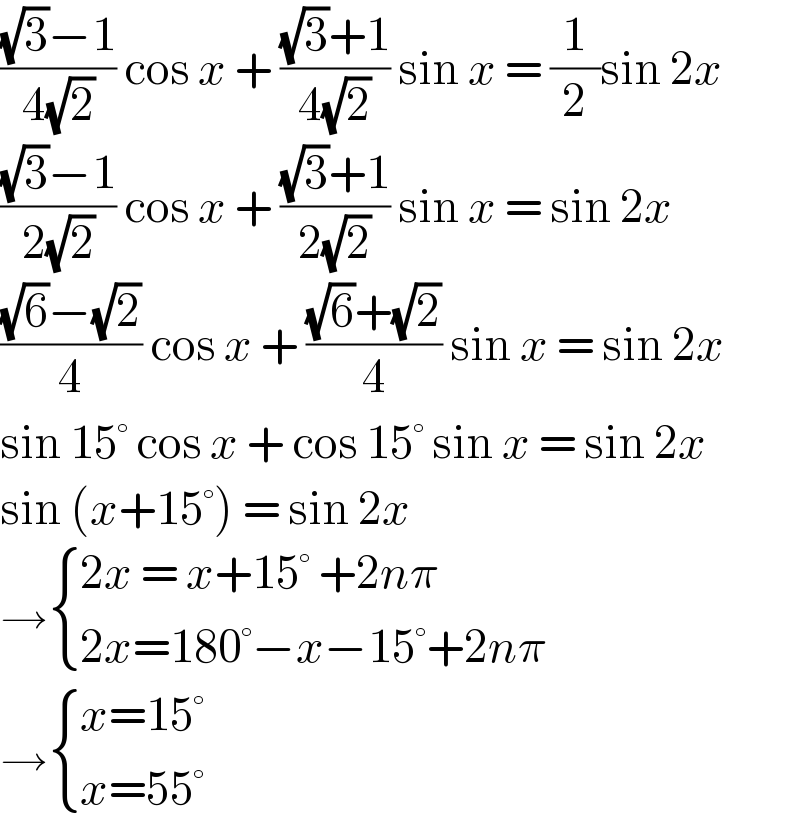
Question and Answers Forum
Question Number 119266 by benjo_mathlover last updated on 23/Oct/20

Commented by MJS_new last updated on 23/Oct/20
![(1+(√3))sin x −(1−(√3))cos x =4(√2)sin x cos x [sorry no time to type this transformation] 2(√2)sin (x+(π/(12))) =2(√2)sin 2x sin (x+(π/(12))) =sin 2x obviously one solution is x+(π/(12))=2x ⇒ x=(π/(12)) generally sin 2x =sin (x+(π/(12))) x=(π/(12))+2nπ∨x=((11π)/(36))+((2n)/3)π ⇒ for 0≤x<(π/2) we get x=(π/(12))∨x=((11π)/(36))](Q119283.png)
Commented by benjo_mathlover last updated on 23/Oct/20

Answered by Bird last updated on 23/Oct/20

Answered by bemath last updated on 23/Oct/20

Commented by MJS_new last updated on 23/Oct/20

Commented by bemath last updated on 23/Oct/20

Answered by 1549442205PVT last updated on 23/Oct/20
![(((√3)−1)/(sin x)) + (((√3)+1)/(cos x)) = 4(√2).Since two sides are positive ,squaring both two sides we get the equivalent equation ((4−2(√3))/(sin^2 x))+((4+2(√3))/(cos^2 x))+(4/(sinxcosx))=32 ⇔(2−(√3))(1+(1/(tan^2 x)))+(2+(√3))(1+tan^2 )+((2(1+tan^2 x))/(tanx))=16 ⇔(((2−(√3))(1+t^2 ))/t^2 )+(2+(√3))(1+t^2 )+((2(1+t^2 ))/t)=16(with t=tanx) ⇔(2+(√3))t^4 +2t^3 −12t^2 +2t+2−(√3)=0 ⇔[t−(2−(√3))][(2+(√3))t^3 +3t^2 −3(2+(√3))t−1]=0 i)t−(2−(√3))=0⇒tanx=t=2−(√3) ⇒x=15° ii)(2+(√3))t^3 +3t^2 −3(2+(√3))t−1=0 ⇔t=1.428148 ,two negative roots rejected ⇒tanx=1.428148⇒x=55° Thus,the given equation has two roots x=15° and x=55°](Q119294.png)
